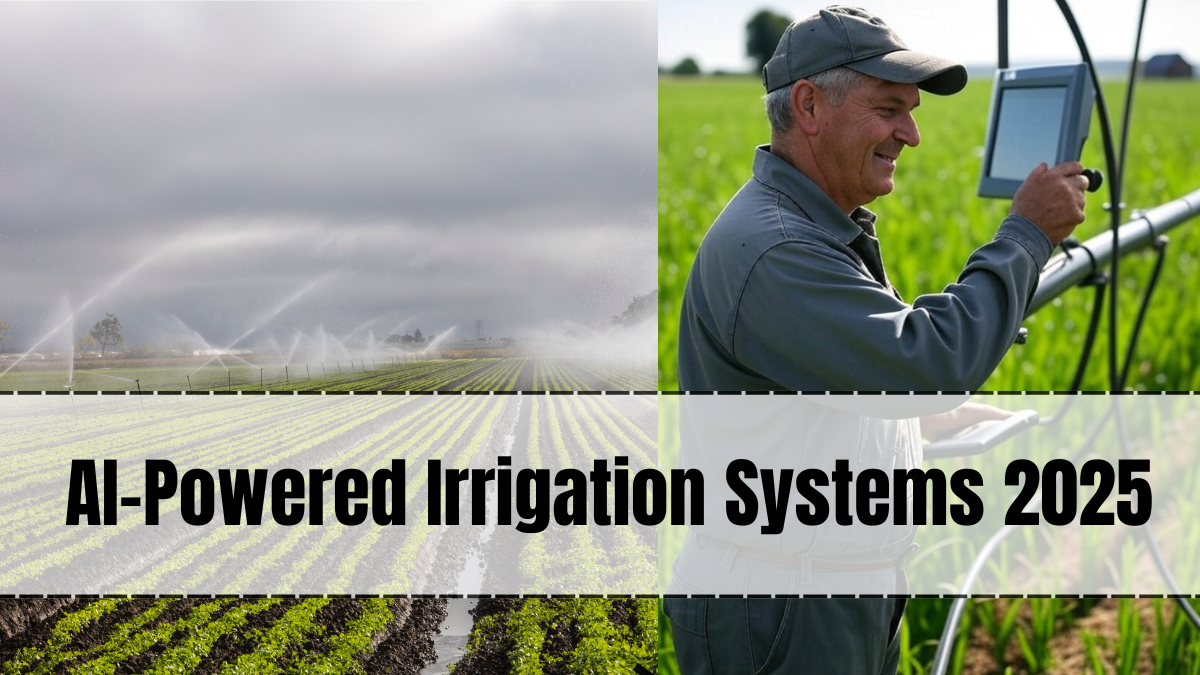In 2025, agriculture in India is witnessing a digital transformation with the rise of AI-powered irrigation systems. These advanced solutions are helping farmers optimize water usage, reduce wastage, and increase crop productivity. As climate change impacts rainfall patterns and water resources, AI farming technologies are proving to be game changers for sustainable agriculture.
The AI-powered irrigation systems combine smart sensors, weather forecasting tools, and intelligent algorithms to determine exactly how much water crops need. This ensures maximum yield with minimal water consumption, aligning perfectly with the government’s water-saving initiatives.

How AI Farming Improves Irrigation
Traditional irrigation often relies on fixed schedules or manual observations, which can lead to overwatering or underwatering. In contrast, AI irrigation uses:
-
Soil Moisture Sensors – Measure real-time moisture levels.
-
Weather Forecast Integration – Adjusts watering schedules based on predicted rainfall.
-
Crop Growth Data – Calculates water needs according to crop type and stage.
-
Automated Water Flow Control – Regulates irrigation channels or drip systems without human intervention.
This precise water-saving approach not only preserves resources but also reduces electricity costs for pumping water.
Key Benefits of AI-Powered Irrigation Systems
The adoption of AI farming for irrigation offers multiple advantages:
-
Efficient Water Usage – Ensures every drop counts by delivering water only where and when it’s needed.
-
Higher Crop Yields – Healthy plants produce more, thanks to consistent hydration.
-
Lower Costs – Saves electricity, labor, and maintenance expenses.
-
Sustainability – Reduces water wastage, helping fight drought conditions.
-
Scalability – Can be adapted to small farms or large agricultural estates.
These benefits are making AI-powered irrigation systems popular across rural India.
Integration with Government Schemes
In 2025, the government is actively promoting AI irrigation through subsidies and training programs. Farmers adopting water-saving technology can avail incentives under initiatives like:
-
Pradhan Mantri Krishi Sinchayee Yojana (PMKSY) – Supports micro-irrigation.
-
Digital Agriculture Mission – Encourages use of AI and IoT in farming.
-
State-Level Water Conservation Schemes – Offer financial aid for smart irrigation tools.
This policy push is expected to boost adoption rates nationwide.
Role of IoT and Data Analytics
The efficiency of AI-powered irrigation systems increases when combined with IoT (Internet of Things) devices and data analytics:
-
IoT-Enabled Sensors – Transmit real-time field data to a central dashboard.
-
AI Algorithms – Analyze data for actionable insights.
-
Mobile Apps – Allow farmers to monitor and control irrigation remotely.
Such integrations make AI farming more accessible, even to small-scale farmers with limited technical skills.
Challenges in Implementation
While AI irrigation is highly beneficial, certain challenges remain:
-
High Initial Investment – Installing sensors and automation systems can be costly.
-
Lack of Awareness – Many farmers are still unaware of how AI can help.
-
Connectivity Issues – Rural internet infrastructure is not always reliable.
-
Training Needs – Farmers must learn to interpret AI-generated data.
Addressing these challenges will require coordinated efforts from the government, tech companies, and farmer cooperatives.
Future of AI in Irrigation
The future looks promising for AI-powered irrigation systems. Upcoming innovations may include:
-
Drone-Based Irrigation Monitoring – Aerial surveys for precision watering.
-
Advanced Predictive Models – AI that accounts for climate change patterns.
-
Solar-Powered Smart Pumps – Combining renewable energy with AI control.
-
Voice-Activated Controls – Allowing farmers to operate irrigation through local language commands.
With these advancements, AI farming will become even more efficient and affordable.
Final Thoughts
The AI-powered irrigation systems 2025 initiative is more than just a technological upgrade — it’s a sustainable solution to one of agriculture’s biggest challenges: water scarcity. By adopting AI irrigation and water-saving methods, farmers can improve yields, lower costs, and protect natural resources.
As more farmers embrace these innovations, India’s agricultural sector will move closer to achieving both food security and environmental sustainability.
FAQs
What is an AI-powered irrigation system?
It’s a technology that uses artificial intelligence, sensors, and automation to deliver the right amount of water to crops.
How does AI save water in farming?
It monitors soil moisture, weather forecasts, and crop needs to avoid overwatering or wastage.
Can small farmers afford AI irrigation systems?
While the initial cost is high, subsidies and government support make it more affordable.
Does AI irrigation require constant internet connectivity?
Not always — many systems store data locally and sync when connectivity is available.
What crops benefit the most from AI-powered irrigation?
Crops with high water sensitivity like vegetables, fruits, and pulses benefit the most.
Click here to know more.
